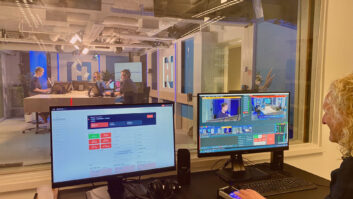PALO ALTO, Calif.�Facebook’s Connectivity Lab recently announced two new terrestrial communications systems focused on improving the speed, efficiency and quality of internet connectivity around the world �TerragraphandProject ARIES(Antenna Radio Integration for Efficiency in Spectrum).

TERRAGRAPH
According to this Facebookblog entry, Terragraph is a 60 GHz, multi-node wireless system focused on bringing high-speed internet connectivity to dense urban areas. Utilizing commercial off-the-shelf components and leveraging the cloud for intensive data processing, the Terragraph system is optimized for high-volume, low-cost implementation.
60 GHz spectrum has typically been avoided due to its high absorption of oxygen and water, but the United States, United Kingdom, Germany, China, South Korea, Japan and others saw the benefit of making this part of the spectrum available for unlicensed use, similar to the Wi-Fi 2.4 GHz and 5 GHz bands. Up to 7 GHz of bandwidth is available in the 60 GHz band, and countries like the United States are seeking to expand this to a total of 14 GHz.
Given the limited range of the 60 GHz signal, nodes will be placed across a city at 200-250 meter intervals. The vast bandwidth and unique signal-absorbing nature of the band limits interference and simplifies network planning, while the unlicensed nature of the spectrum helps to further minimize costs. Terragraph implements a phase-array antenna to retain the highly directional signal required for 60 GHz, but makes it steerable to communicate over a wide area.
PROJECT ARIES
Project Aries is a transmission technology that is both spectrally efficient (in terms of the total number of bits transmitted per unit of radio spectrum bps/Hz) and energy efficient (in terms of the total number of bits transmitted per unit Joule energy spent b/J), allowing for extended coverage range. Project ARIES is a proof-of-concept test platform for this highly efficient usage of spectrum and energy: A base station with 96 antennas, it can support 24 streams simultaneously over the same radio spectrum. We currently are able to demonstrate 71 bps/Hz of spectral efficiency, and when complete ARIES will demonstrate an unprecedented 100+ bps/Hz of spectral efficiency.
ARIES uses �spatial multiplexing,� meaning that the antenna array at the base station can serve many autonomous user terminals on the same time-frequency resource. This spatial resource sharing serves as an alternative not only to the need for spectrum licensing, but also the procurement of additional base stations in conventional cell-shrinking strategies. ��Massive MIMO systems with an excessively large number of antennas have recently gained attention, thanks to asymptotic results on random matrix theory that illustrate how the effects of uncorrelated noise and small-scale fading are virtually eliminated as the number of antennas in a MIMO cell grows large,� according to the blog.
�Massive MIMO systems are also versatile over a wide range of system parameters. For instance, the beamforming gain afforded by using a large number of transmit antennas may be used to overcome the large path-loss associated with millimeter wave links in urban areas. Alternatively, the beamforming gain may be harnessed at lower frequencies to provide wide-coverage connectivity to rural areas, and this is our focus.�











